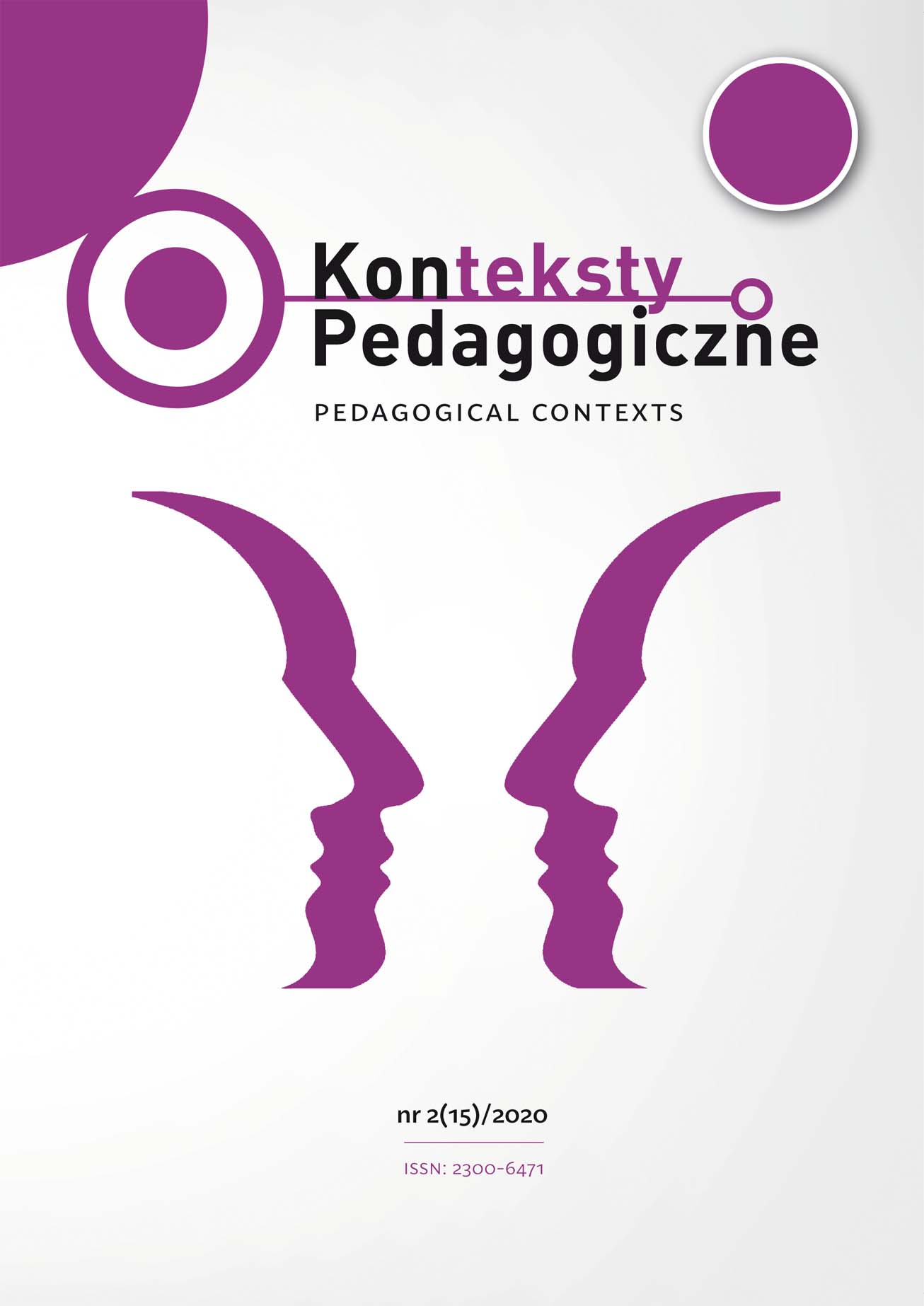Abstract
Students often struggle with various school difficulties. Can the reason be the classroom’s poorly organized space? Searching for the answer to this question is one of the important premises of the paper.
The spatial layouts described in the article, at the stage of primary education, influence such processes as communication between students, their education and upbringing, shaping their mutual relations, transferring messages, shaping skills, and creating attitudes and identity.
The purpose of this article is to show the spatial arrangements selected by the teachers of integrated classes and to indicate their motivations behind making a specific choice.
The first part of the article contains an introduction and review of the literature on the selected topic. The second part presents the results of own research. The study ends with conclusions.
References
Bałachowicz, J. (2017). Edukacja wczesnoszkolna w procesie zmiany. Dyskurs standardów czy dyskurs wartości? [Early Childhood Education in the Process of Change. The Discourse of Standards or the Discourse of Values?]. Lubelski Rocznik Pedagogiczny, 36(1), 11–27. DOI: 10.17951/lrp.2017.36.1.11.
Gajdzica, Z. (2008a). Modele przestrzennej organizacji kształcenia integracyjnego [Models of Spatial Organization of Integrated Education]. In: T. Lewowicki, B. Grabowska & A. Gajdzica (eds.), Socjalizacja i kształtowanie się tożsamości – aktualne doświadczenia na pograniczu polsko-czeskim [Socialization and Shaping of Identity – Current Experiences on the Polish-Czech Border] (pp. 225–228). Toruń: Wydawnictwo Adam Marszałek.
Gajdzica, Z. (2008b). Przestrzeń klasy jako miejsce integracji [Classroom Space as a Place for Integration). In: T. Żółkowska & M. Wlazło (eds.), Pedagogika specjalna – koncepcje i rzeczywistość. Socjopedagogiczne aspekty rehabilitacji osób niepełnosprawnych [Special Education – Concepts and Reality. Socio-Pedagogical Aspects of Rehabilitation of Disabled People], Vol. 3 (pp. 268–271). Szczecin: Uniwersytet Szczeciński.
MEN (2010). Edukacja skuteczna, przyjazna i nowoczesna. Jak organizować edukację uczniów ze specjalnymi potrzebami edukacyjnymi? [Effective, Friendly and Modern Education. How to Organize the Education of Students with Special Educational Needs?]. Warszawa: Przewodnik Ministerstwa Edukacji Narodowej.
Modrzewski, J. (2008). Socjologia przestrzeni edukacyjnych [Sociology of Educational Spaces]. In: J. Modrzewski, M.J. Śmiałek & K. Wojnowski (eds.), Relacje podmiotów (w) lokalnej przestrzeni edukacyjnej (inspiracje…) [Relationships of the Subjects of (in) the Local Educational Space (Inspirations...)] (pp. 93–113). Kalisz–Poznań: UAM Wydział Pedagogiczno-Artystyczny.
Nalaskowski, A. (2002). Przestrzenie i miejsca szkoły [School Spaces and Places]. Kraków: Impuls.
Popławska, J. & Sierpińska, B. (2001). Zacznijmy razem. Dzieci specjalnej troski w szkole podstawowej [Let’s Start Together. Special Needs Children in Primary School]. Warszawa: Wydawnictwa Szkolne i Pedagogiczne.
si.kuratorium.katowice.pl [accessed: 15.03.2020].
Wołoszyn, S. (ed.) (1959). Nauczanie początkowe oraz metodyka w rozwoju historycznym dawniej i dzisiaj [Early Childhood Education and Methodology in Terms of Historical Development and Today]. In: A. Maćkowiak & S. Wołoszyn (eds.), Metodyka pierwszych lat nauczania [Methodology of the First Years of Teaching] (pp. 5–6). Warszawa: „Wspólna Sprawa”.
In accordance with the recommendation of the Ministry of Science and Higher Education, which aims to counteract the practice of “ghostwriting” and “guest authorship,” all authors submitting their text for publication should attach an author’s statement which declares the contribution of each of the authors to the article. The printed and signed statement should be delivered by mail or other means to editor-in-chief Joanna Skibska or sent in the form of a scan to the following e-mail address: redakcja@kontekstypedagogczne.pl. The authors will not receive remuneration for publishing their papers. The editors reserve the right to make minor editorial changes to the articles which will not affect the substance of the article. We encourage all authors to prepare their articles in accordance with the guidelines for manuscript preparation. Download pdf file.
Authors transfer all copyrights and grant the journal the right of first publication with the work simultaneously licensed under a Creative Commons Attribution License that allows others to share the work with acknowledgement of the work's authorship and initial publication in this journal. All authors agree to the publishing of their email addresses, affiliations and short bio statements with their articles during the submission process.

